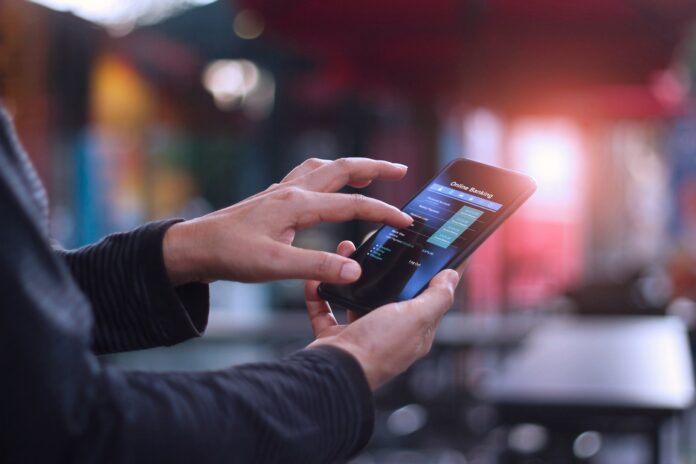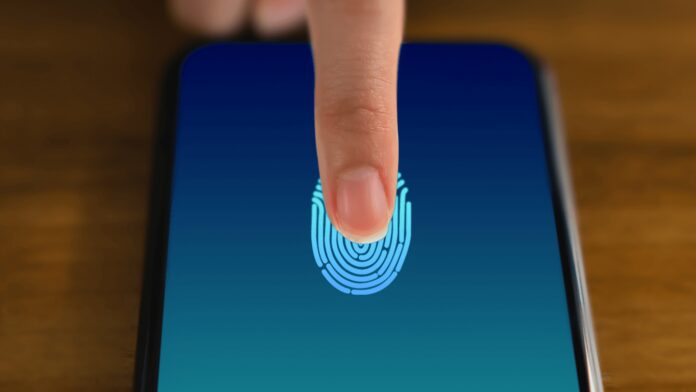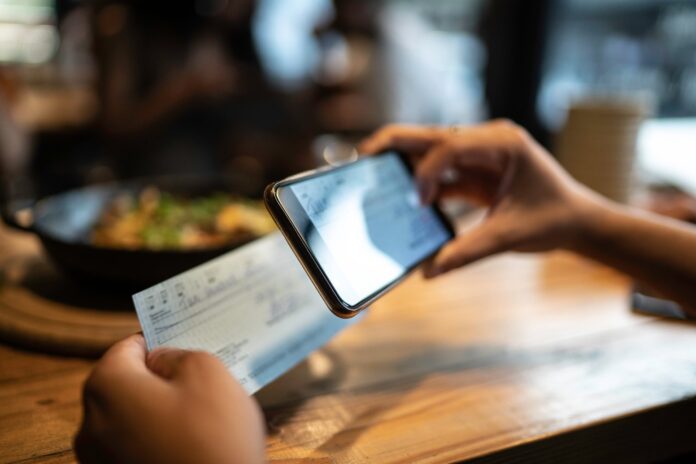Mobile banking is a trend that will continue to grow over the next few years as mobile devices keep getting better and more powerful and more people to use them.
For many, phones are already the main computing device. So it makes sense if banks start providing information and services to customers through mobile apps.
The Advancements in Mobile Banking Technology
Mobile banking applications are not a new phenomenon. The first mobile banking applications were developed in the UK and USA in the 1990s.
These apps only allowed customers to check their balances and transfer money between accounts.
Today, mobile banking development companies create user-friendly and secure mobile banking applications that can be used on various platforms and these applications have modern advanced features.

For example, these are real-time push notifications, Touch ID integration, and many others, which you can familiarize yourself with on the website. Companies now also offer customized solutions for financial institutions to suit their unique requirements.
In addition to serving as an alternative channel for customer engagement and support, apps have helped banks reduce operational costs by allowing branch employees to perform tasks remotely instead of traveling back and forth between branches daily.
The Security Measures in Mobile Banking
Security measures in mobile banking are stronger than in traditional banks. In addition to having to enter a traditional password, users must also enter a second authentication factor before accessing their accounts.
This second factor could be something like fingerprints or facial recognition. In addition, all data in the application is encrypted. Even if someone gets hold of your phone, they won’t be able to read your information and use it for their own purposes.
Moreover, mobile banking apps also have additional security features such as the ability to remotely lock or wipe a lost or stolen device, preventing unauthorized access to sensitive financial data.

Some mobile banking apps also have built-in fraud detection systems that can alert users if any suspicious activity is detected on their accounts.
Additionally, most mobile banking apps have session timeouts and automatic logouts to ensure that if a user forgets to log out, their account will not remain open and accessible to others.
Overall, these robust security measures make mobile banking a safe and convenient way to manage your finances.
However, it is important to remember to follow best practices such as keeping your device and app up to date, not sharing your login credentials, and using secure Wi-Fi connections while accessing your account to further enhance your security.
Mobile Banking’s Impact on Traditional Banking Services
Mobile banking is a convenient way to access your money, pay bills and perform other banking transactions. Modern mobile applications offer many features that traditional banks cannot match. These functions are:
Convenience: With a few taps on your smartphone screen, you can transfer funds between accounts or pay bills without visiting a bank branch or writing a check. You can even deposit checks with the app by taking a picture of them with your phone’s camera!
Moreover, mobile banking has brought financial services to populations that may have previously been underserved by traditional banks.
With mobile banking, people in remote or rural areas without access to physical bank branches can still access financial services through their smartphones.
Additionally, mobile banking has made it easier for people with disabilities or mobility issues to manage their finances without the need to physically visit a bank branch.
Security: Your personal information is safe because it’s stored on secure servers, not on paper like traditional banks, where someone can steal it from mailboxes or trash cans (or even someone else’s wallet).

This makes identity theft less likely when using mobile banking services than when using traditional methods such as writing checks from home and carrying cash around town all day.
In addition to protecting personal information, mobile banking has also become increasingly secure against fraud and cyber threats.
Banks and other financial institutions have implemented advanced security measures to protect against hacking attempts and fraudulent activities, such as two-factor authentication, biometric authentication, and encryption of sensitive data.
However, the growing popularity of mobile banking has had a significant impact on traditional banking services. Many brick-and-mortar bank branches have seen a decline in foot traffic as customers opt to perform transactions through their mobile banking apps.
As a result, some banks have begun to close branches or reduce their operating hours, which can be inconvenient for customers who prefer to conduct their banking in person.
Additionally, mobile banking has increased competition in the financial industry, with many fintech companies offering innovative digital services that traditional banks may struggle to match.
Nevertheless, many traditional banks have recognized the importance of offering mobile banking services and have invested in developing their own apps to keep up with the changing landscape.
Overall, while mobile banking has certainly disrupted the traditional banking industry, it has also provided customers with greater convenience and security when managing their finances.
Challenges and Opportunities in Mobile Banking

The rapid growth of mobile banking presents both challenges and opportunities for the banking industry. One of the biggest challenges is ensuring the security of mobile transactions and protecting customers’ financial information from cyber threats.
Another challenge is the need to provide an optimal user experience that is intuitive and easy to use. Moreover, the adoption of mobile banking by older generations and underserved populations is also a challenge that needs to be addressed.
On the other hand, mobile banking provides opportunities for banks to reach new customers and expand their market share.
It also allows for greater financial inclusion by providing access to banking services for individuals in remote areas or those who have limited physical access to traditional bank branches.
In addition, mobile banking offers opportunities for banks to leverage technology such as artificial intelligence and data analytics to provide personalized banking experiences and innovative financial products.

Conclusion
We’ve seen how mobile banking has evolved over the years, but there’s still much more to explore. We look forward to seeing where this technology will take us next!








